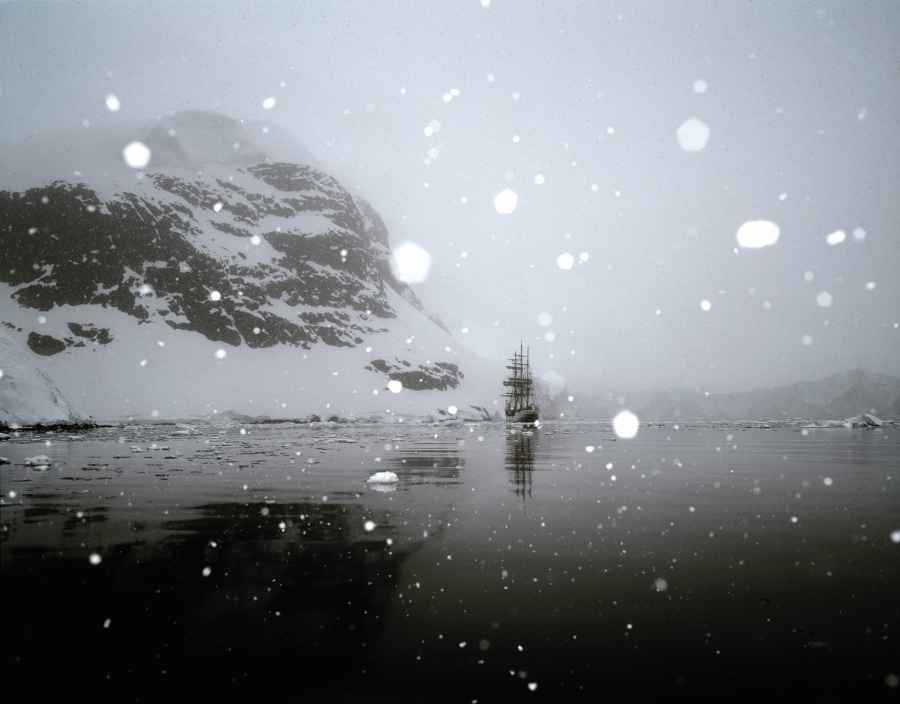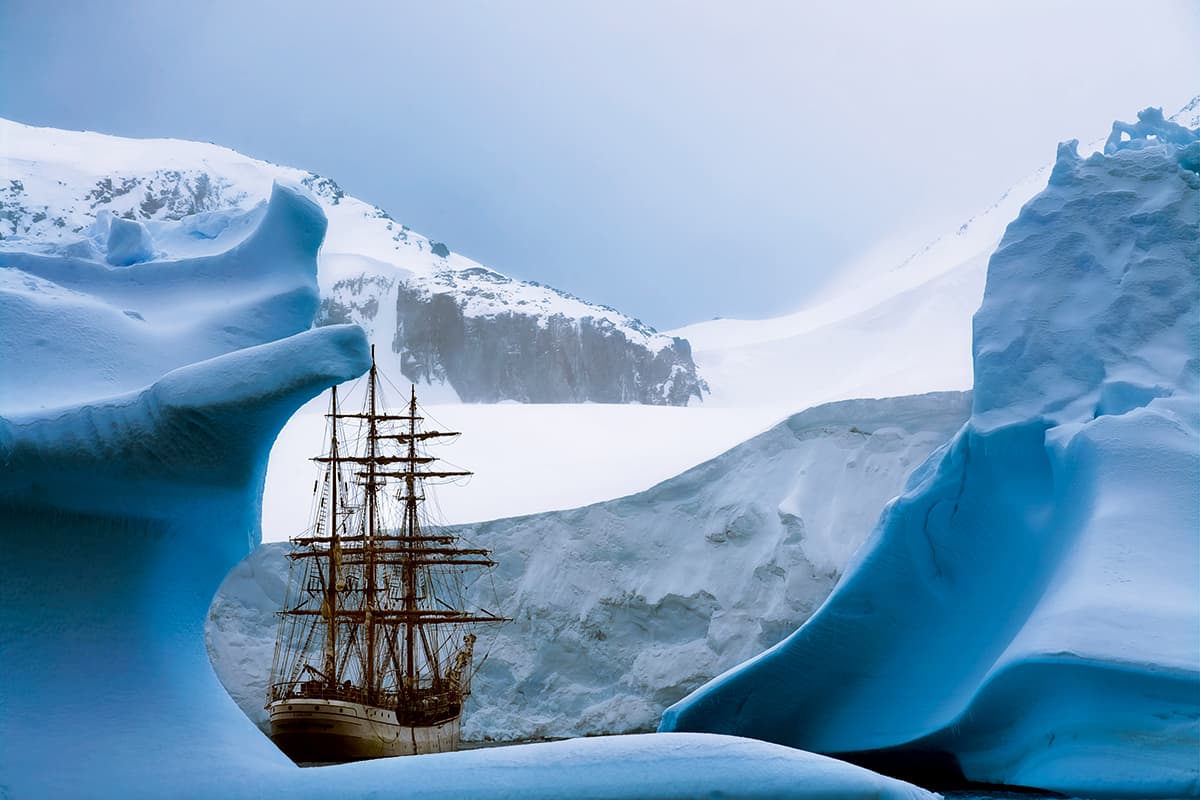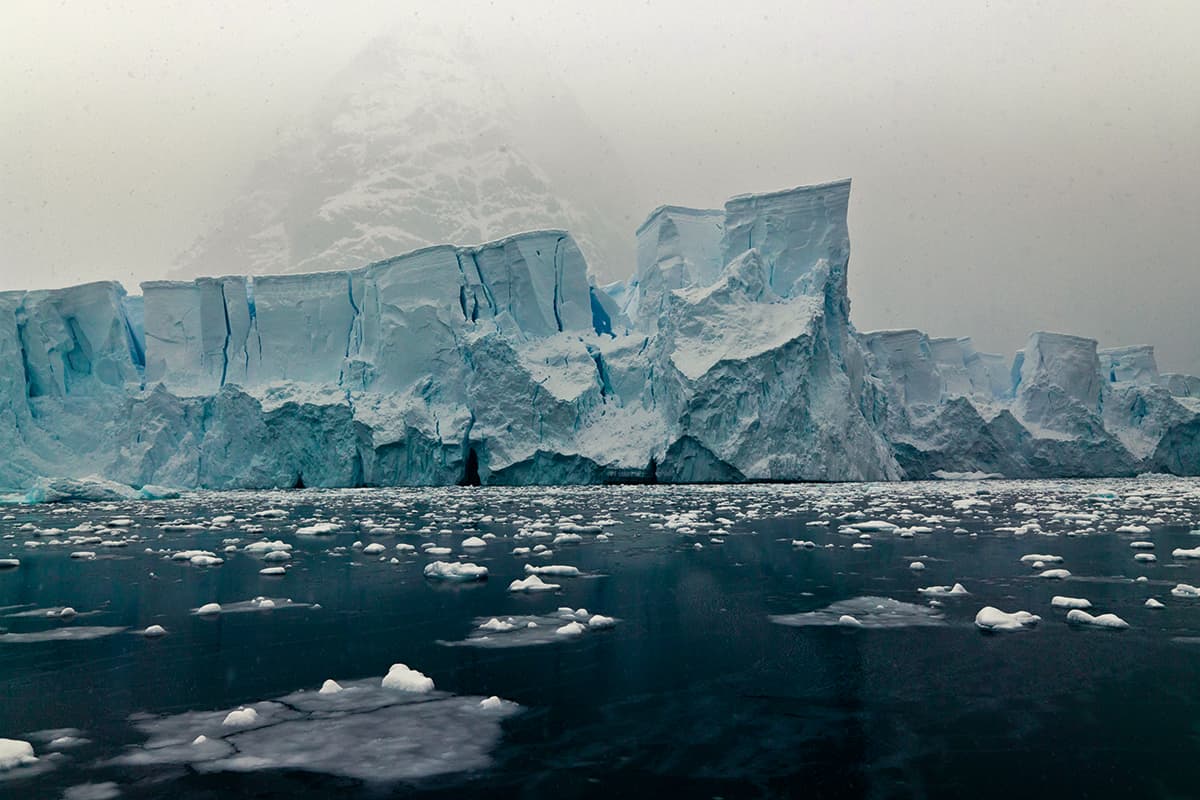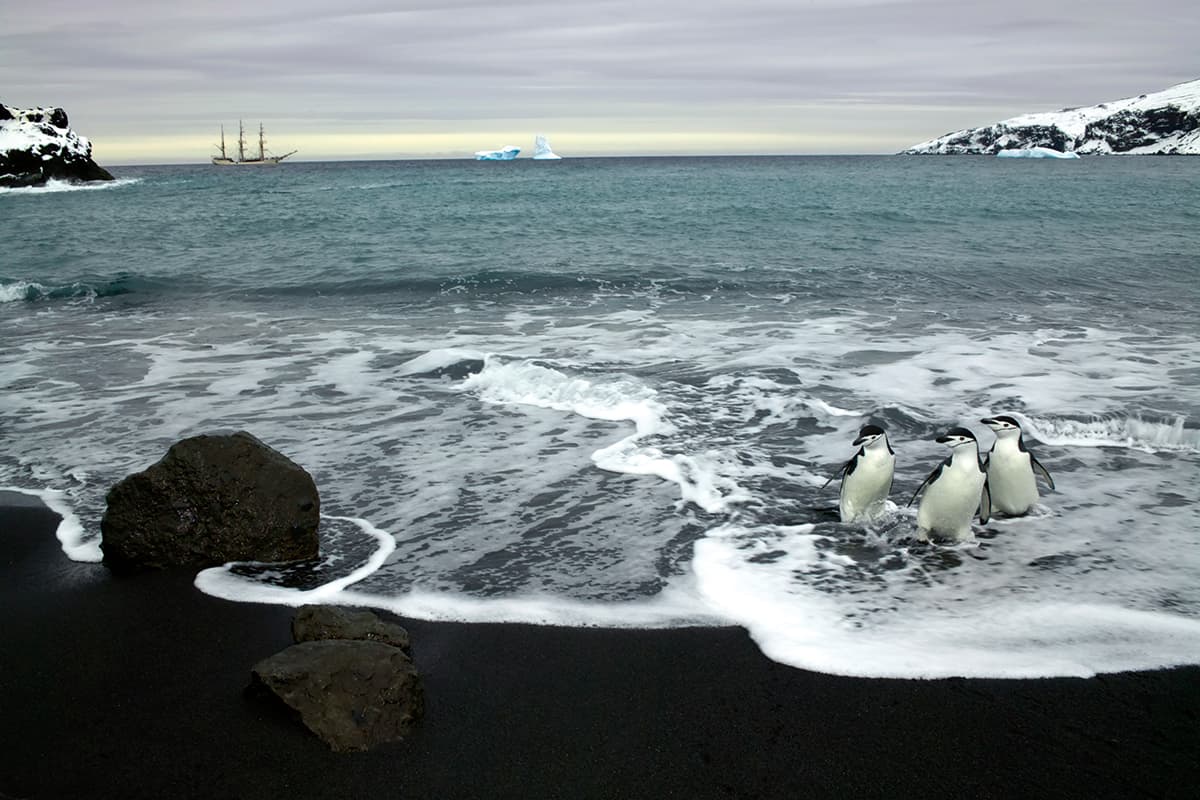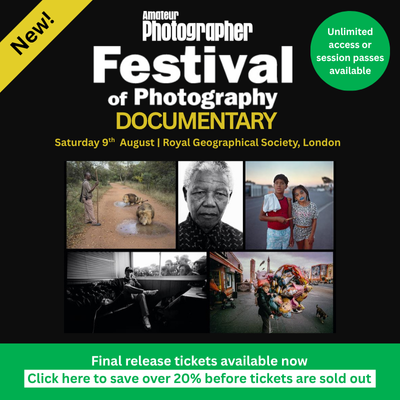René Koster’s love affair with Antarctica was triggered by his fascination for the work of photographer Frank Hurley, who famously documented Ernest Shackleton’s epic expedition to the South Pole (1914-17). The paradoxical allure of Earth’s coldest and windiest continent led René to take sail on a tall ship, the bark Europa, on a voyage that would cover 1,600 nautical miles after first setting sail from Argentina.
While Shackleton’s ship, Endurance, hit disaster when it became marooned on pack ice, fortunately no such calamity would befall René’s German-made vessel, despite it being of a similar vintage – it was built in 1911, the year in which Norwegian explorer Roald Amundsen defeated Captain Robert Scott in the race to the South Pole.
It was Hurley’s photo of the Endurance’s predicament – combined with a keen interest in history and exploration – that set René on his Antarctica venture. ‘Hurley took the photo at night and used a flash. I felt like I was watching a negative,’ says René.
Like the most compelling stories from history, René’s images have an enduring quality. Taken in November-December 2004, they first found acclaim when they won an accolade in the Travel Photographer of the Year awards in 2006. More recently, the images experienced something of a renaissance with coverage of the project in the The Washington Post.
The vision
Prompted by Jim Casper, editor of contemporary photography website lensculture.com, René drew up an artist statement about his Antarctica project, which reads: ‘Thoughts of frozen ships trapped in ice-covered seas cross my mind, images of the photographers who joined these expeditions to report of the unexplored. Fascinated by their stories, I head for the same circumstances as those of the early 20th century. A journey of longing, to a time that once was. A heroic saga; filled with hardship and adventure, in an infinite, barren land.’
Although the Antarctica series contains a reference to the past, René didn’t want the photos to look as if they had been created with techniques available in the early 1900s. ‘This is why I have deliberately chosen to work in colour, allowing the greyscale of the landscape to emphasise the blue captured in ice,’ he explains. ‘In my search for the right images, I have tried to avoid as many elements of the present time as possible; things that would remind me of everyday life. The calm misty weather gives me a sense of desolation and makes the world feel smaller. The slow rate of travelling by sailing ship influences my way of taking photographs: searching for stillness, harmony and tragedy in the landscape. Seeking beauty, the beauty of emptiness and cold.’
The image René is most proud of, entitled ‘Ship in Snow Storm’ (above), was captured in the Bay of Coughtrey Peninsula, Paradise Harbour. It shows a ship far away in the Antarctic landscape, with just a few ripples on the water surface, and the ship looking ‘small and frail’. René says: For me, this photograph resembles the stillness that I value so much.’
Dual formats
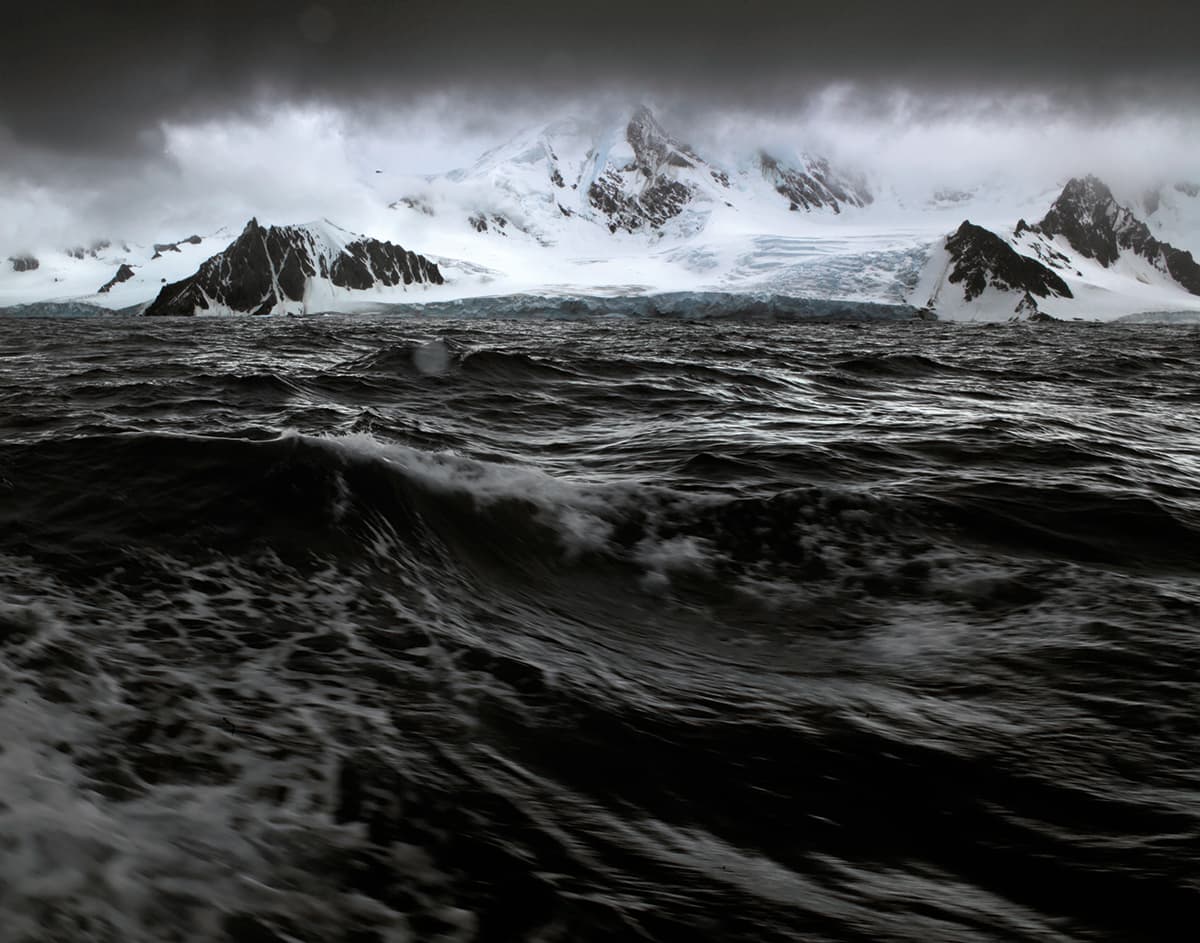
René worked in digital and film, taking some 2,000 pictures using a Kodak DCS-14N DSLR with Nikon 24-200mm lenses, and shooting Kodak Ektachrome E100VS and E100GX on a Mamiya 7 II.
The film option forced him to concentrate more on taking pictures and, as he says: ‘Think twice about it because films are still expensive and there is also money involved in developing them.’
There was also less margin for error when shooting on film, which, René points out, requires a wider knowledge of lighting and exposure.
‘When you use a digital camera and make a mistake of, say, 3 stops, it’s not the end of the world,’ says René. ‘You can still get it right in Photoshop or Lightroom. But when you make a mistake with your film camera of, say, 1 stop, then it’s over, especially when you shoot on slide film.’
It was by observing light, colours and shapes that René was first attracted to photography, as it allows him to see beauty in things he may not otherwise have noticed. ‘I was always fascinated by the way film stills could affect me,’ says René. ‘Music and literature also moved me, but not in the way images did. They triggered me to create stories of my own.’

The three-week Antarctica voyage allowed René to envisage what Shackleton might have felt when confronted by such awe-inspiring icescapes. ‘Once we arrived in Antarctica, the contrast between the violent seas we had faced earlier and the immense silence of the ice-filled landscape couldn’t have been greater,’ he explains. ‘All the passengers on the ship fell quiet. All references with the modern world were gone. It was like entering a completely different world with its own rules and will.’
Another time, another place
René admits he would have relished being an explorer in a bygone age, citing one of his favourite writers, the explorer Redmond O’Hanlon, who feels he was born in the wrong century. ‘But I don’t know if I would have had the required braveness,’ he muses.
On other expeditions, René has been called upon to help the crew when they are laid low with seasickness. Not so in Antarctica, where he was able to devote all his time to photography – leaving the captain and around 50 shipmates to get on with their jobs as researchers, biologists, journalists and fans of bird and animal life.
There was the odd scary moment, however. ‘Approaching the icebergs closely, you could hear the cracking of the ice,’ says René. ‘One time, while returning to the ship, the dinghies were followed by a group of killer whales. We could hear the excited yells from the people who were watching us from the ship, while in the dinghy all was quiet and nobody dared to move.’
Photography came with its own risks. Cameras may be weather proof, but batteries discharge quickly in cold weather, so René made sure they were safely tucked away in a bag or coat. To combat his arch enemy – condensation – his favourite accessory became a plastic bag.
René’s photography thrives in such extreme climates. ‘The elements enabled me to emphasise the hardships this journey to Antarctica posed,’ explains René, who lives in Haarlem, Amsterdam.
Finding photography
René found his ‘own way in photography’ while studying at the Academy of Art and Design St Joost in Breda, the Netherlands. He also drew inspiration from his photographic heroes, including Steve McCurry, Martin Parr, Alex Webb and Sebastião Salgado.
‘I’m also a great admirer of Robert Frank, whose book, The Americans, is so much more than a reportage about a country – it shows the soul of America in the 1950s,’ he says.
René continues to draw much of his inspiration from the ice-filled outer reaches of the Earth. Last year, he visited a relatively unknown area of Greenland for a magazine shoot, where the ice became so thick he was forced to leave as winter closed in. The Greenland terrain, he reflects, was similar to that in Antarctica with its icebergs and ‘desolate places’.
Although in the past he has been tempted to warmer climes such as Venezuela and the Caribbean, photography in a cold climate seems to be René’s trademark, leading to more of what he excels at.
‘When you make a reportage about cold areas, everybody assumes that you like it. So, they are always going to ask you to go to all the cold places. I’ve now been invited to Alaska again,’ he adds.
One such admirer of his work is Nautique, a Dutch magazine that René contributes to regularly. It regards him as their cold-weather photographer, telling him, ‘When you go to cold places, you come home with the best results.’
René mainly concentrates on travel photography, and although he also does portraiture, he prefers such shoots to be outside the studio. ‘I love working on location and find it challenging to respond to situations,’ he says.
Words of wisdom
Asked what advice he has for an aspiring professional, he says: ‘Whether it’s on location or in the studio, it’s that feeling of flow, leading to that one moment in which everything comes together.’
Pressed to explain how this ‘flow’ is attained, René finds it tricky to answer. ‘It’s difficult to put your finger on because it’s more to do with some kind of [unconscious] feeling I have at that moment.’
Assessing the quality of his work afterwards is a key part of this process and he believes a second opinion is healthy. ‘I think the photographer is his own worst editor,’ says René. Someone else has to look at it because they are more neutral to the issue it represents or [to] just the photograph itself.’
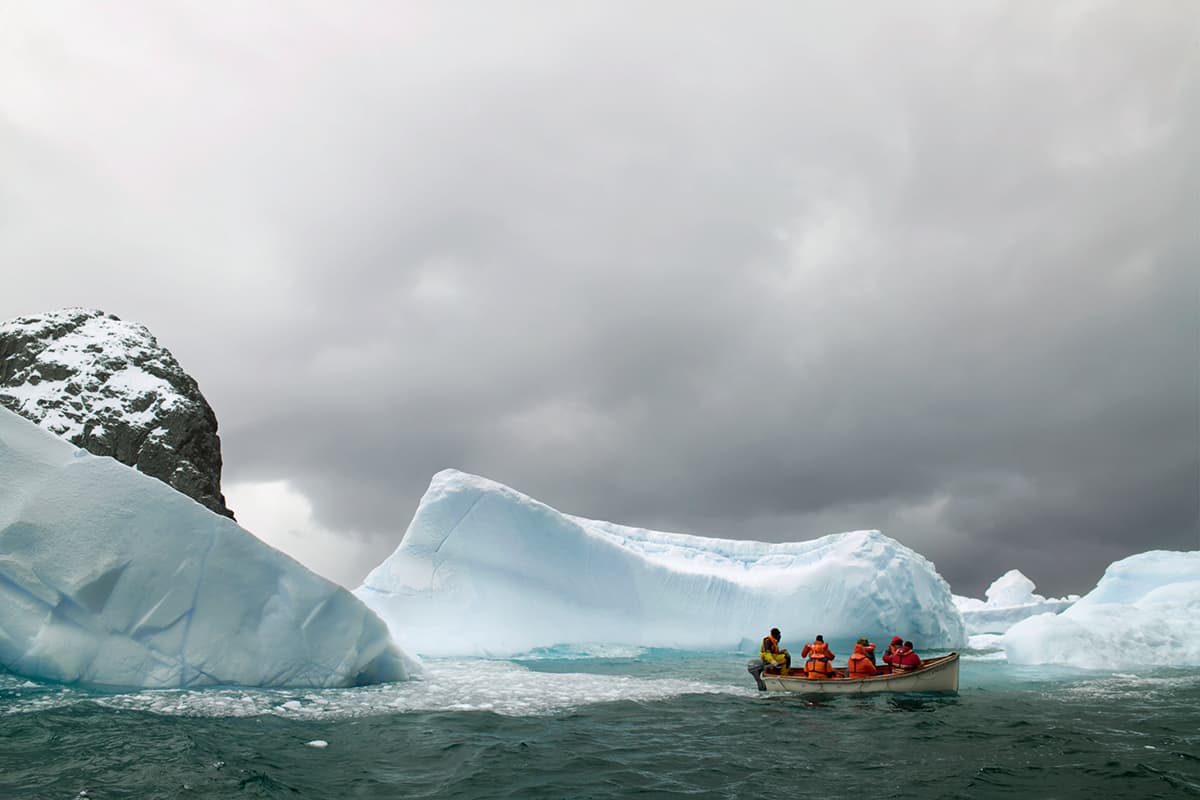
Given his past success, René is – unsurprisingly – planning to revisit Antarctica next year, adding South Georgia to the itinerary. This time, though, his focus is likely to be on developing his own story, rather than referencing past expeditions such as Shackleton’s.
Asked if he will adopt a more environmental angle given reports of global warming melting the polar icecaps, René seems unsure about what he will witness. ‘I have to see the truth for myself,’ he replies. ‘I speak to people… who go every year to that same place and they say there isn’t much change. Every year is different. Last year, they had a lot of ice compared to two years ago… it changes every year.’
Whether René will see a transformation in the icescapes on his next Antarctica adventure is unclear. A change of camera kit, however, is more certain. Next time, the weather-hardened photographer plans to ditch film and take more up-to-date kit, including his faithful Nikon D800. ‘Nowadays, digital quality is so much better than 10 years ago, especially when you focus – it’s so good,’ he says.
If René’s already stunning images are anything to go by, then we can only wonder what the march of technology will do for René’s next Antarctic exploits.
All images © René Koster
______________________________________________________________________________________________________________________________________
About René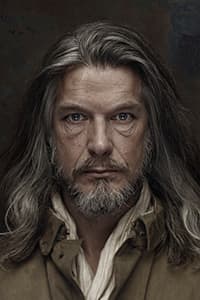
René’s work concentrates mostly on travel photography and portraits for advertising agencies and magazines around the world. Work from his Antarctica project was awarded runner-up at Travel Photographer of The Year. To see more, visit www.renekoster photography.nl

